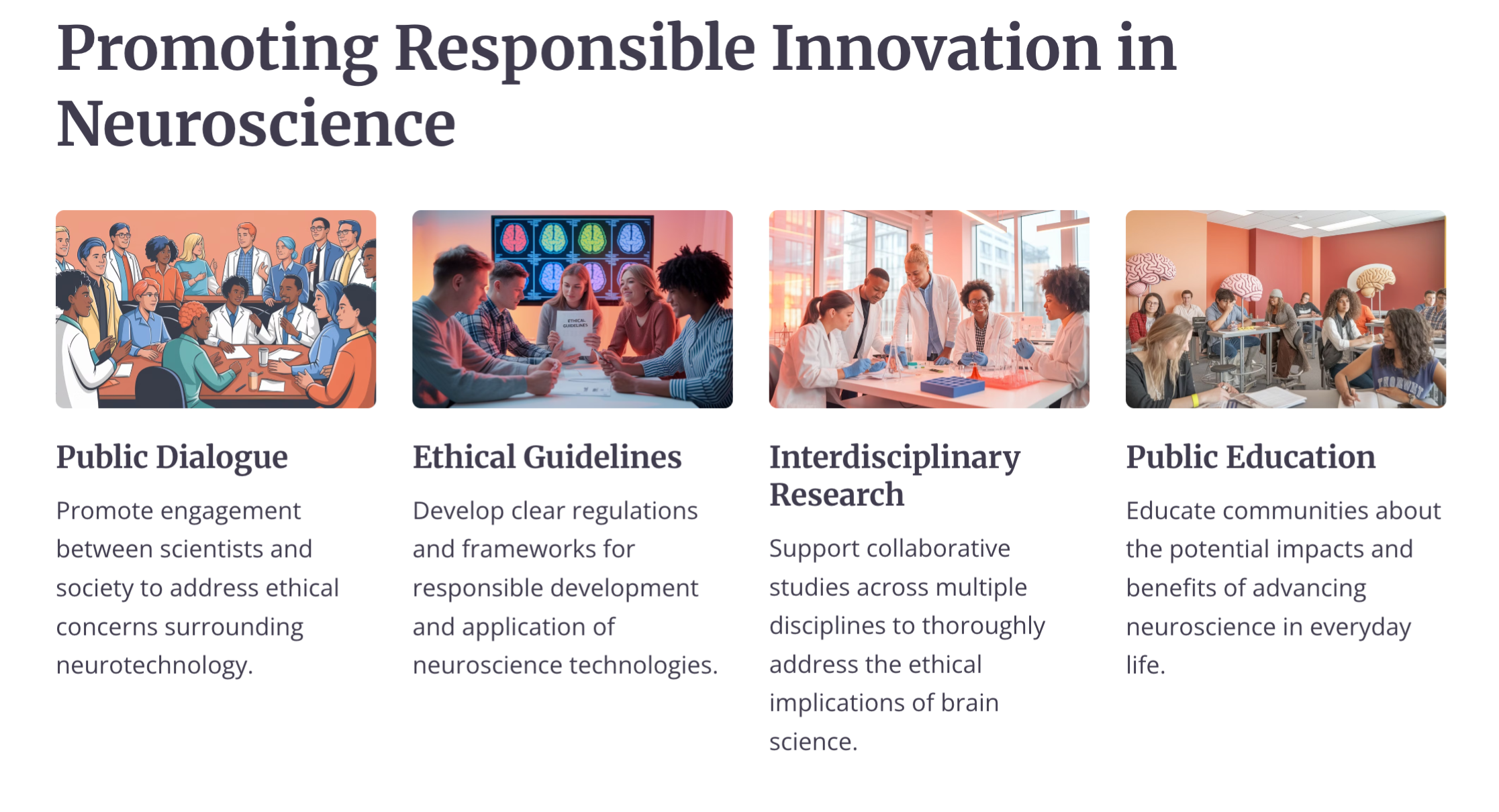The Expanding Ethical Landscape of Brain Science and Technology

For centuries, the functions of the brain were mysterious, but thanks to scientific and technological advances, there is now more understanding of the nervous system.
Neuroscience, a field of study relating to the organization and functioning of the nervous system, is gaining growing interest. Neuroscience’s applications were initially focused on the diagnosis and treatment of neurological and psychiatric disorders, but have since shifted and are now integrated into everyday life. As neuroscience expands, so too does the need to consider the ethics surrounding it.
Applications of Neuroscience
Neuroscience can be applied to enhance relationships at work and improve employees’ productivity, and it can be used to facilitate learning in children or improve adults’ capacity to learn. Neuroscience makes it possible to improve daily life by optimizing cognitive abilities, regardless of age or current state of health. Several factors contribute to healthy cognition: sleep and rest, diet, physical exercises, creative activities, and hobbies.
The use of neuroscience in pedagogy is beneficial for students and makes teachers’ tasks easier. Understanding a student’s vision and the causes of their difficulties helps teachers implement a more effective action plan.
In business, neuroscience can be used in different areas, including decision-making mechanisms, methods of interpersonal communication, improving employee cohesion, stress reduction, and improving employee productivity.
Ethical Considerations
As neuroscience and technology continue to develop, it is important to consider the ethical implications of their use. Potential issues include:
•Privacy and data security: As brain imaging and other technologies become more sophisticated, they can reveal increasingly personal information about individuals. It is important to ensure that this information is protected and used responsibly.
•Informed consent: It is important to ensure that individuals are fully informed about the risks and benefits of participating in neuroscience research or using neuroscience-based technologies.
•Autonomy and free will: Neuroscience research is increasingly revealing the neural mechanisms underlying decision-making and behavior. This raises questions about the extent to which individuals are truly free to make their own choices.
•Equity and access: It is important to ensure that the benefits of neuroscience research and technology are available to all, regardless of socioeconomic status or other factors.
Neuromyths
Even if neuroscience has a positive impact, neuromyths have the opposite effect. A common misconception is that the best way to teach is to continuously apply innovations. However, innovation does not automatically mean improvement, and some new methods are actually well-known techniques that have been optimized.
Another myth is that individuals who have strong artistic capacities make greater use of the right brain hemisphere, whereas those who are more logical and analytical use the left hemisphere. This is a false premise because every individual, regardless of their capacities, uses all of their brain.
Motivation
Motivational impulse must be adjusted based on both internal states and external environmental conditions. Motivated behaviors are regulated through the coordinated response of molecules that act within specific circuits in order to make complex decisions. However, it is important to emphasize the number of myths that arise in relation to motivation. Many theories have emerged, but a large number of them are not founded on scientific evidence.
Addictions
An addiction is not always linked to the use of psychoactive substances, and addictive behaviors are more widespread than they seem. Several neurotransmitters are involved in the onset of addictions: dopamine, GABA, norpine, phrine, glutamate, and serotonin . Understanding addiction is key to addressing and treating it appropriately.
Responsible Innovation
To ensure that neuroscience and technology are used in an ethical and responsible manner, it is important to:
- Promote public dialogue and engagement.
- Develop clear ethical guidelines and regulations.
- Support interdisciplinary research that addresses the ethical, legal, and social implications of neuroscience.
- Educate the public about neuroscience and its potential impact on society.
Neuroscience offers objective and scientific tools to understand consumers and employees, and business owners can use this information to make better business decisions. By creating a healthy working environment where employees feel less stressed, they can improve their brain fitness and neuroagility. Also, cognitive neuroscience has made a significant contribution to improving the working environment and modifying corporate management.
When applying neuroscience, leaders can set clear goals and deadlines for their team while allowing some leeway, reducing stress levels, and improving creativity and productivity.
The future of neuroscience and technology holds great promise for improving human health and well-being, and it has a positive impact if used correctly.
